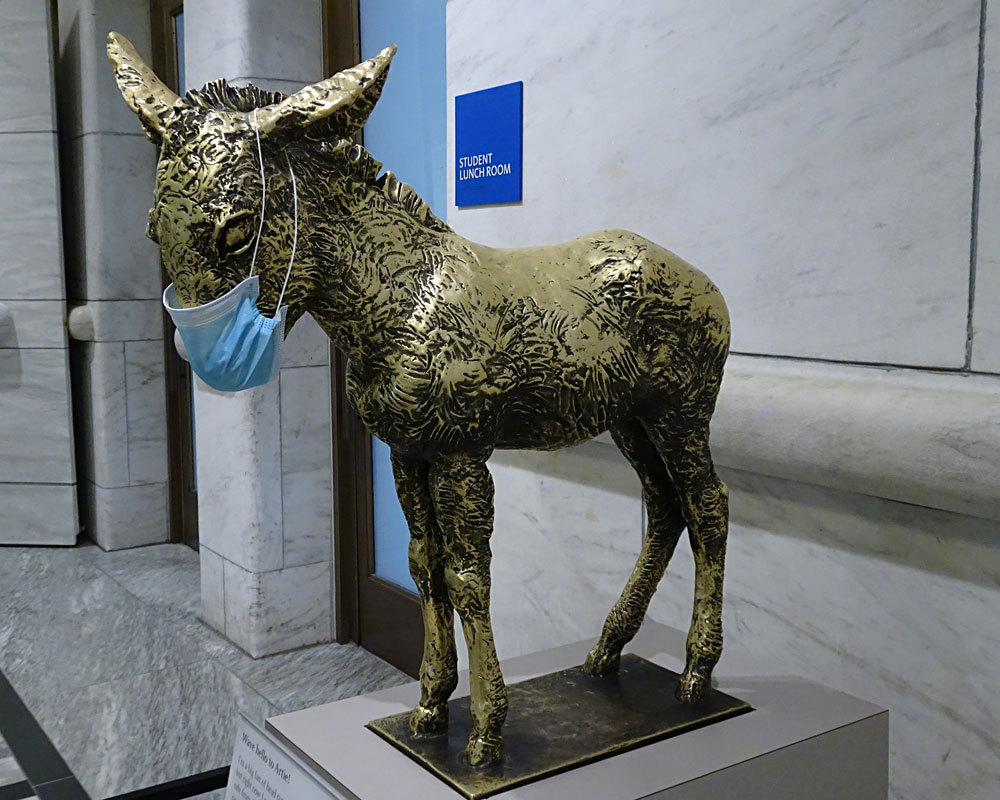
July 17, 2020; Los Angeles Times, and Voice of Orange County
As the calendar counts down to the time when summer vacation should be ending and children should be planning to return to schools, public education leaders must pass a difficult test and answer some hard questions:
- “When will it be safe again?”
- “What changes are required to make it safe for all who enter our doors?”
- “Will the risk of being in classrooms be less than the risk of continued social isolation and lost educational opportunity that comes with distance learning?”
To make these difficult but necessary decisions, responsible, informed leaders have looked to public health experts for guidance as they sort through the complex science of a novel disease. Others, however, have chosen to put their political perspective first, placing the public at greater risk.
Last week, California’s Orange County Board of Education demonstrated the latter when it finalized its guidelines for school reopening. They chose, as reported by the Los Angeles Times, to ignore recommendations from the federal Centers for Disease Control and Prevention (CDC) and the state and county Departments of Education and use their own expertise instead.
Lisa Sparks, a member of the board, explained (as reported by the Voice of Orange County) that their panel had “pediatric experts” and “policymakers” on it. These big thinkers allegedly advised them that “delaying the opening of public schools until a cure or a vaccination for COVID-19 is developed is unacceptable.”
Social distancing of children—who generally represent the lowest risk cohort for COVID is unacceptable. Requiring children to wear masks during school is not only impossible to implement but not based on science and could be potentially harmful. It’s therefore unacceptable.
Sign up for our free newsletters
Subscribe to NPQ's newsletters to have our top stories delivered directly to your inbox.
By signing up, you agree to our privacy policy and terms of use, and to receive messages from NPQ and our partners.
However, the experts on the panel apparently had a negligible effect on the writing of that report. That honor went to Dr. Ken Williams Jr., president of the Orange County Board of Education, who, according to the Voice of Orange County, said, “The expert panel neither approved of the paper nor was involved in writing it. For my knowledge, I have had virtually no contact with our panel since the special community forum in June.”
Another report author—and non-subject-matter-expert—was Will Swaim, who’s president of the California Policy Center, a conservative think tank that frequently criticizes the power of employee unions and advocates for school choice. Based on his review of the data, he told the Voice of Orange County that he “knew from just looking at OC data, the kids are not at risk, they’re almost supermen. I’m not saying they’re invulnerable, but almost. Kids have more to risk from the adults in the room and the adults have much more to risk from other adults in the room…the narrative that a return to schools would be harmful was largely propagated by teachers’ unions.”
Dan Cooper, a professor of pediatrics and UC Irvine’s associate vice chancellor for clinical and translational science, explains the board’s lack of scientific rigor in comments reported by the L.A. Times.
The white paper was “very poorly annotated,” citing one study on the efficiency of masks protecting against influenza in 2010 and several newspaper articles. “It’s very safe to say the level of scientific review was deficient. There are at least 100 articles in the last couple of months regarding COVID-19 and face masks. This is hardly a review of the literature at all.”
The need for decisions based on data was illustrated this weekend when a new study indicated, counter to Swaim’s conjecture, that children are at risk and do pose a risk to others. According to the New York Times, “a large new study from South Korea offers an answer: Children younger than 10 transmit to others much less often than adults do, but the risk is not zero. And those between the ages of 10 and 19 can spread the virus at least as well as adults do. The findings suggest that as schools reopen, communities will see clusters of infection take root that include children of all ages, several experts cautioned.”
The Orange County school board’s approach illustrates the danger we face. The things we need to do are demanding and may require community sacrifice. They may ask those who believe in less government and more individualism to recognize that this is a moment when only government can effectively respond. That’s what the science and data tell us. We ignore this at our own risk, and in the case of Orange County’s board, at the risk of children and their families.—Martin Levine













